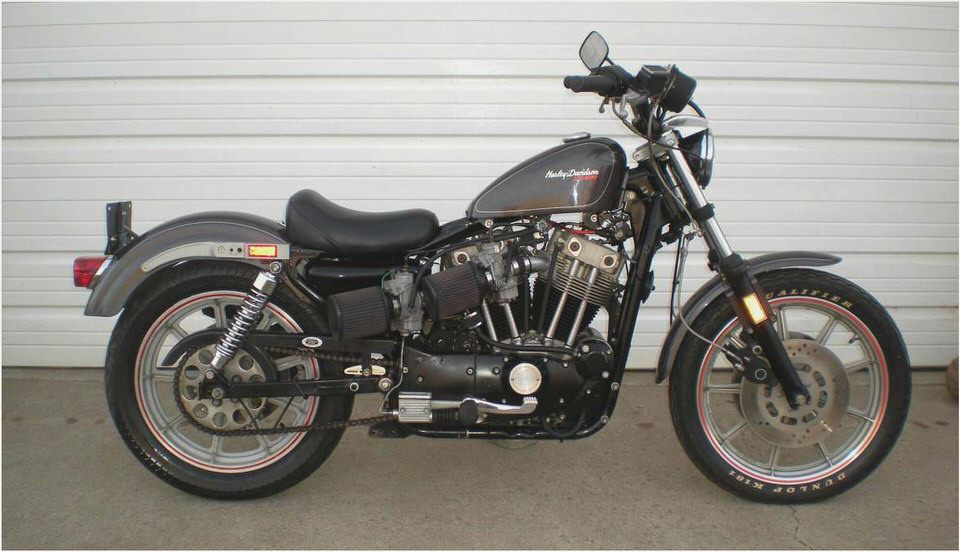
Classic To Modern Age Journey 30+ Pics Of Harley-Davidson
American motorcycle Manufacturer. Founded in Milwaukee, Wisconsin, during the first decade of the 20th century, it was one of two major American motorcycle manufacturers to survive the Great Depression. Harley-Davidson also survived a period of poor quality control and competition from Japanese manufacturers.
The company sells heavyweight (over 750 cc) motorcycles designed for cruising on the highway. Harley-Davidson motorcycles (popularly known as “Harleys”) have a distinctive design and exhaust note. They are especially noted for the tradition of heavy customization that gave rise to the chopper style of motorcycle. Except for the modern VRSC model family, current Harley-Davidson motorcycles reflect the styles of classic Harley designs.
Harley-Davidson’s attempts to establish itself in the light motorcycle market have met with limited success and have largely been abandoned since the 1978 sale of its Italian Aermacchi subsidiary.
Harley-Davidson sustains a loyal brand community which keeps active through clubs, events, and a museum. Licensing of the Harley-Davidson brand and logo accounted for $40 million (0.8%) of the company’s net revenue in 2011.
Harley-Davidson 1903-1928
At the dawn of the 20th century, motorcycle production was already well underway in Europe but still in its infancy in the U.S. Yet by the time William Harley and brothers Arthur and Walter Davidson pieced together their first motorcycle in 1903, there were already a number of other domestic manufacturers, though most were little more than backyard enterprises. Among them was the Indian Motorcycle Company, founded in 1901, which would later become Harley’s biggest competitor.
That first Harley-Davidson differed little from other motorcycles of the time, essentially being a bicycle powered by a simple single-cylinder motor that drove the rear wheel through a leather belt. The normal pedals and chain remained in place so the rider could pedal the bike up to speed to start the motor, as well as lend a little leg power when ascending hills.
Though the 10.2-cubic-inch single-cylinder motor was patterned after an existing design, each part was made by hand. It managed to wheeze out only enough power to propel the machine to a brisk walking pace. A second example with a larger, more powerful motor followed, and it was this machine that formed the basis for the early production versions.
Three motorcycles were built that year, and the Harley-Davidson Motor Company was in business.
Production rose to eight units in 1904, then to 16 the following year, reaching 50 in 1906, when the original black finish was joined by Renault Grey. In years to come, the company’s quiet motors and grey paint would prompt riders to nickname Harleys the “silent grey fellows.
With the quest for more speed came the need for more power, and Harley-Davidson answered with its now-famous V-twin motor. Introduced at a motorcycle show late in 1907, the first production model was released in 1909 with vacuum-operated intake valves and belt drive-both normal Harley-Davidson practices at the time.
Problems surfaced early and the model was pulled after that year, but the V-twin returned in 1911-1928 with mechanically actuated intake-over-exhaust (IOE) valves and a belt tensioning system. With that, a legend was born.
Harley-Davidson 1929-1935
Harley-Davidson’s first flathead V-twin was a 45-cubic-inch unit used in a new bike called the Model D, which was intended to compete with the highly successful Indian Scout. The 45 would prove to be a versatile and long-lived power plant as it remained in production until 1973. Along the way it served duty not only in street motorcycles, but also in three-wheeled Servi-Cars, military WLAs of the 1940s, and WR racing bikes of the 1950s.
Larger 74- and 80-inch Big Twin flat-heads followed, but neither was as reliable or long-lived as the under-stressed 45.
Though flatheads (also known as side-valves) were theoretically less efficient than overhead-valve or even F-head (intake over exhaust) configurations, flatheads were far easier to service and had evolved to the point where power output was competitive-both of which had been proven and capitalized upon by Indian. Factory horsepower charts showed that Harley’s flatheads slightly out-produced its similar-sized F-heads, most of the advantage coming (surprisingly) at high rpms. These figures were reflected in on-road performance, where flathead models didn’t accelerate quite as quickly due to a sizable increase in weight, but had slightly higher top speeds
Unfortunately, the flathead models appeared just months before the stock market crash of October 29, 1929. During the depths of the Great Depression that followed, Harley’s sales fell to less than a fifth of what they’d been before the crash. But the company managed to keep its head above water while many others were going under, and as the economy began to recover in the mid-1930s, Harley found itself with fewer competitors and an eager clientele.
Harley-Davidson 1936-1947
It wasn’t long after the introduction of the flathead V-twins that Harley-Davidson began working on a new overhead-valve version. This is surprising not only because so little time had elapsed since the flathead’s debut (the previous IOE design was on the market for over 20 years), but also because the initial decision and engineering work took place during the darkest days of the depression.
Of course, Harley wasn’t really breaking any new ground here, as the company had produced overhead-valve singles on and off for many years. But along with the new motor’s overhead valves came a re-circulating oiling system and that was new to Harley-Davidson. Because of it, the overhead-valve mechanisms were now enclosed-though early models proved far from oil-tight.Harley’s contemporary flathead Big Twins displaced 74 and 80 cubic inches (the latter added in late 1935), but the new motor was sized at only 61 cubic inches
Due to its more efficient overhead-valve design, however, it put out more power. According to factory engineering figures, late F-head and early flathead 74s both put out about 30 horsepower. Later high-compression flatheads were rated at 36 horsepower, but that was still shy of the 40 horsepower claimed for the new overhead-valve motor.
The official name for the overhead-valve V-twin was the “61 OHV,” but riders soon dubbed it the “Knucklehead” due to its valve covers, which looked like fists with two knuckles sticking out. Motorcycles powered by the new V-twin were designated the E-Series: E models had lower 6.5:1 compression giving 37 horsepower, while ELs had 7:1 compression and 40 horsepower.
In 1941, a larger 74-cubic-inch version of the OHV appeared under the F-Series designation. Shortly thereafter the 80-inch flathead was dropped, but the 74 flathead remained available through 1948. World War II prompted both a military version of the Forty-five and a special horizontally opposed flathead twin with shaft drive that was designed for desert use. The former was called the WLA, and 88,000 were built for use by U.S. troops.
The latter XA model didn’t fare as well; only 1,000 were built, and none saw action overseas. As it turns out, the revered Knucklehead lasted only a dozen years on the market (and World War II took a chunk out of that), but its influence was far greater than the figure would imply. It formed the basis for all Big Twins produced since, and that’s a legacy that can’t be ignored or forgotten
Harley-Davidson 1948-1965
Harley-Davidson was hard at work on an update of the Knucklehead even during the solemn years of World War II. Engineers revised the valve train to incorporate hydraulic lifters that alleviated the need for constant valve adjustment, and the motor ran cooler thanks to revised heads that were now cast out of aluminum. The new heads were capped by redesigned rocker covers that came out looking like upside-down roasting pans, prompting riders to nickname the new motor the “Pan Head.” It arrived for 1948, and with that, a new era at Harley-Davidson was begun.
Introduced the following year were Hydra-Glide front forks, modern telescopic units that replaced the old leading-link design. Besides doubling the amount of available wheel travel, they also lent a cleaner look to the Big Twins. So monumental was this innovation that the company referred to the bikes themselves as Hydra-Glides-the first time Big Twins were christened with a name rather than just a series designation.
The next few years brought only minor revisions, but 1952 saw the introduction of a hand-clutch/foot-shift option for the Big Twins. Like any change from tradition, this modern arrangement took a while to catch on, but by mid-decade, most riders had made the switch. Though hand-shift models were offered by Harley all the way through 1978, annual demand rarely topped 200 units.
Perhaps the biggest news of 1953 didn’t have anything to do with styling or mechanical changes, but rather to the motorcycle market itself. After nearly 50 years as Harley’s arch-rival, the Indian Motorcycle Company finally closed its doors. Indian hadn’t been on firm financial footing since before the war, and the new tide of foreign imports that hit U.S. shores afterward pushed the company over the edge.
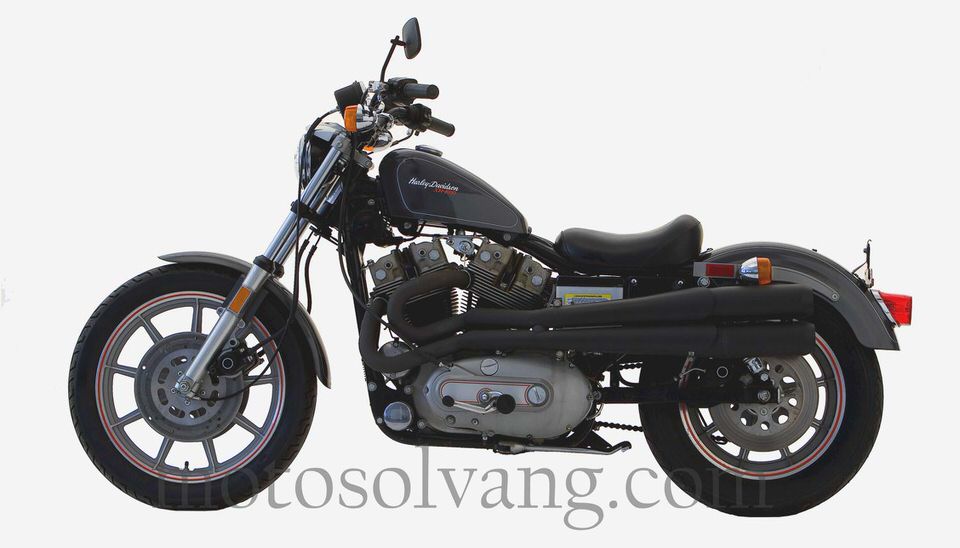
Yet despite Indian’s demise, Harley soon found itself struggling to survive-and for the same reason. To combat the import onslaught, Harley-Davidson brought out a string of smaller offerings beginning right after the war and continuing on into the mid-1970s. First came S-125 two-stroke single, which remained in the line until the late-1950s with only minor changes.
Meanwhile, the W-Series 45 was replaced by the K-Series for 1952, the transformation bringing a redesigned flathead V-twin built in unit with the transmission, telescopic forks, and Harley’s first rear suspension system. The K’s 45-cubic-inch flat-head was enlarged to 55 cubic inches for 1954, and three years later the mid-size machine evolved into the famed overhead-valve Sportster.
After celebrating its 50th anniversary with some specially trimmed 1954 models (why 1954 and not 1953 is a mystery, especially since subsequent anniversary models would use 1903 as year one), the next big change to the Big Twin line came with the adoption of rear suspension for 1958. With that, the Hydra-Glide became the Duo-Glide, putting Harley’s big tourers on the cutting edge of technology — well, late 1930s technology, anyway.
Minor alterations were made over the next several years, but it wasn’t until 1965 that a major step was taken. In what would turn out to be the venerable Pan Head’s final season, riders were finally treated to the luxury of electric starting with the introduction of the Electra-Glide. Too many, Harley’s big touring bike was now “complete,” and the Electra-Glide name endures to this day.
Harley-Davidson 1966-1983
With the addition of an electric starter and the requisite larger battery, a fully dressed Electra-Glide could amass a good 800 pounds worth of resistance when it came time to move out. Harley-Davidson countered with deeper-breathing cylinder heads for the Big Twin that resulted in a 10-percent increase in rated power. Topping the new heads were valve covers that resembled an inverted shovel, and enthusiasts quickly bequeathed the new motor a fitting nickname.
After going public with its stock in 1965, Harley-Davidson found itself facing ever-stiffer competition from overseas manufacturers. Profits declined, and the company’s financial picture looked bleak. Harley began soliciting buy-out and merger offers, and one eventually materialized. In January of 1969, Harley-Davidson merged with sporting-goods manufacturer American Machine and Foundry (AMF).
AMF supplied money to keep Harley-Davidson afloat, and in an attempt to insure a return on its investment, stipulated increased production and expansion of Harley’s line of smaller motorcycles. Harley had worked with Italian partner Aermacchi to produce the single-cylinder four-stroke 250-cc Sprint in the early 1960s, and now tapped Aermacchi again for a string of even smaller t wo-stroke machines. These were Harley-Davidsons in name only, and probably harmed the company’s image more than they aided the bottom line.
Though the Sportster saw an increase in sales during the 1970s, it wasn’t as impressive in terms of profits-or quality control. The same could be said for the Big Twins, while the smaller Aermacchi models just plain took a beating. Yet there were some bright spots. One of the company’s most influential products debuted in 1971 as the FX Super Glide.
Designed by “Willie G.” Davidson, it earned the honor of being the first factory custom. While not an overwhelming success itself, the Super Glide spawned a number of models styled along similar lines, and these eventually became Harley’s stock-in-trade. As the Motor Company soldiered on through the 1970s, it became increasingly apparent that hard times lay ahead unless some changes were made.
Late in the decade, a handful of Harley executives approached AMF with an offer to buy back the company AMF accepted, and in June of 1981, Harley-Davidson was once again in control of its own destiny. It wasn’t going to be an easy trip back to prosperity, but employees, dealers, and owners alike seemed eager to get on the road. And as with any motorcycle journey, the first order of business was to tend to the machinery.
Harley-Davidson 1984-Present
The years immediately after Harley management regained control of the company saw more engineering advancements than any other time since the early teens. Shortly after the buyback, belt drive both primary (engine to transmission) and secondary (transmission to rear wheel) was introduced, as were isolated engine mounts and five-speed transmissions.
Not all models had these features at first, but they were there for the asking. The FXRS of 1983 boasted anti-dive forks, and a new XR-1000 Sportster model featured an exotic dual-crab, aluminum-head motor based on the one used for the XR-750 racer.
A new innovation took the form of a new rear suspension system that looked like the hard tail frames of old, but actually pivoted, extending springs mounted underneath the bike. Harley termed it the Soft tail frame, and it would soon be fitted to a wide variety of custom machines..
Today, Harley-Davidson occupies an enviable position in the business world: Demand for its products far exceeds the available supply, and profits (along with stock prices) have been soaring. Because dealers and buyers have both been left wanting, the company is striving to expand production in the coming years to satisfy the appetite of enthusiasts.
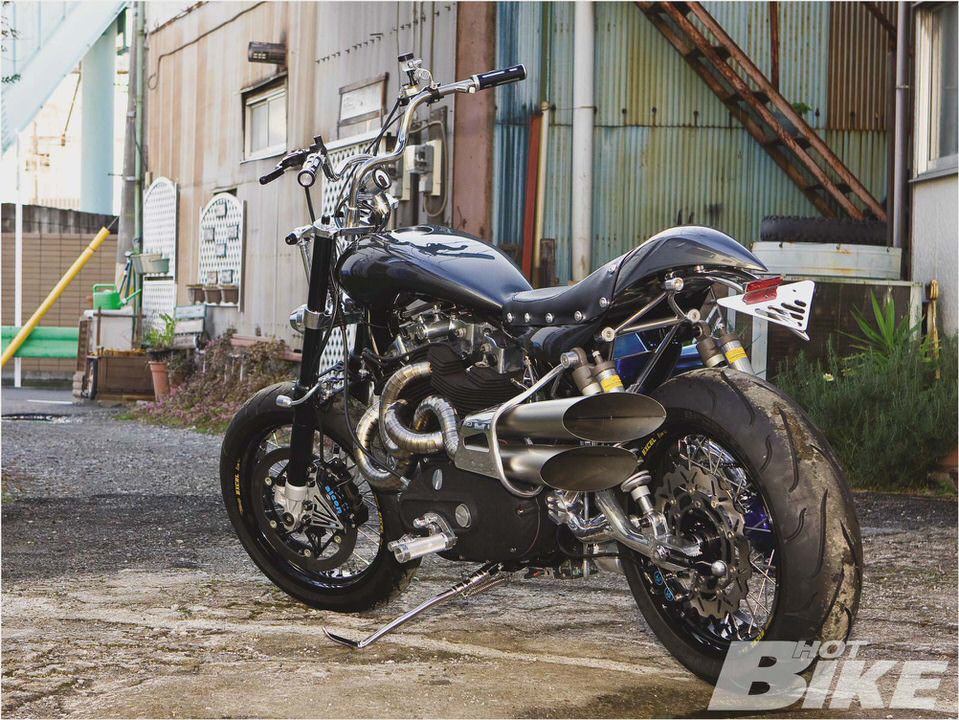
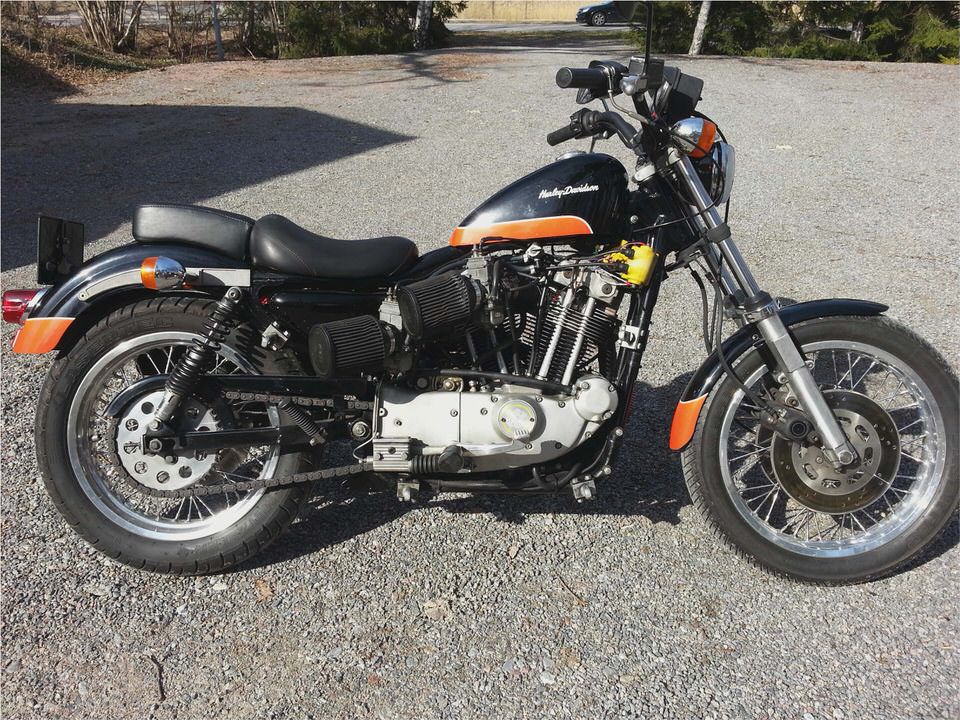
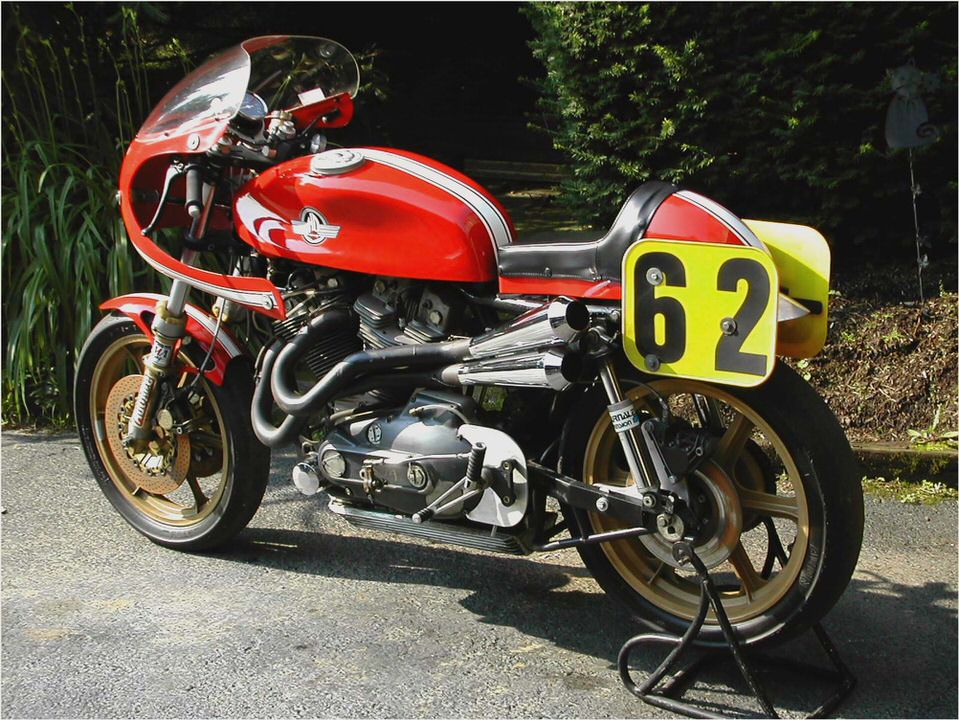

- Test riding the 2011 Harley-Davidson XL1200X Sportster Forty-Eight – National…
- All American Harley-Davidson®
- Harley Davidson Dyna Street Bob FXDB Saddlebags. Hard and Leather Bags
- Harley Davidson FXDB Sturgis
- Harley-Davidson Dyna Switchback FLD

